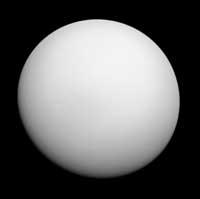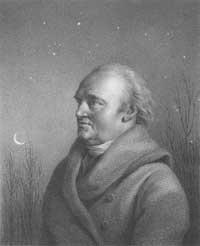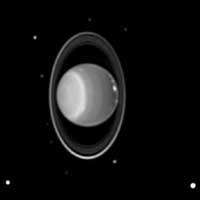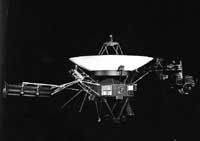Uranus opens the era of planet seekers

Herschel was measuring the positions of the stars and in the constellation of Gemini he saw a discoidal object. At first he gave of course that it was a comet at a distance, apart from the planets, because the comets were the only celestial objects that had disk form observed from the telescope. But comets are usually blurred and that object showed sharp tips. In addition, it moved more slowly than Saturn and was farther away. Herschel deduced that this object was a planet and, after various circumstances, the new planet is called Uranus (Ouranos in Greek), god of the heavens in Greek mythology and father of Saturn.
The Uranus Sun has an average of 2,900 million kilometers, twice as much as Saturn. Like Jupiter and Saturn, Uranus is also a gaseous giant, but quite inferior to them: It has a diameter of 51.118 kilometers and a mass of 14.5 times greater than Earth (8,683x1.0 25 kg). The distance and the size ‘small’ make it flash much less than Jupiter and Saturn and, even though on the black night you can appreciate in sight, it is no wonder that it does so little. In fact, the planets were considered a brilliant body.

However, if it is investigated backwards, it is observed that in the astronomical chronicle there are remains of Uranus. For example, in 1690 the English astronomer John Flamsteed named a star in the constellation of the Bull. When the orbit of Uranus was calculated, they realized that the star was Uranus. Astronomer Charles Lemonier also saw Uranus 13 times in a different place, but did not realize it was the same object and recorded 13 stars.
Succession of Urano
After Uranus were found Neptune and Pluto, the eighth and ninth planet of the Solar System. Neptune was discovered in 1846, according to the calculations of the French astronomer Urban Jean Joseph Leverrier and the British mathematician John Couch Adams. In fact, the orbit of Uranus did not correspond to theoretical calculations. Each researcher, for his part, calculated that an unknown planet was operating in the orbit of Uranus and determined where to find it. Similar calculations led to the discovery of Pluto in 1930.
Since then, beyond Pluto, a region called ‘The Kuiper Belt’ has been discovered, composed of hundreds of ice objects, and several exoplanets, planets outside our galaxy, have been detected.
Curious rotation
One of the special characteristics of Uranus is rotation. Most of the planets have the axis of rotation perpendicular to the plane of the ecliptic, but Uranus has almost parallel. The axis of rotation has a tilt angle of 98 degrees, so if we look from the Sun it seems that Uranus is lying.

With 84 years forming a tour around the Sun, each pole of Uranus is 42 years under light and another 42 years in darkness. Unlike the Earth, the poles of Uranus receive more energy from the Sun than the equator, although then it is not noticeable at temperature. However, if the Earth turned the same way, the seasons would be so extreme that life would not have developed.
As for its composition, Uranus is mainly found in rock and ice (water, methane and ammonia). Unlike Jupiter and Saturn, there is little hydrogen and helium. Uranus has no nucleus, Jupiter and Saturn itself, while the components of the Uranus are approximately uniformized.
Like other gas giants, Uranus has rings. They were detected in 1977, after passing by the star Uranus SA0158687. Since 1973 it was known that on March 10, 1977 Uranus was going to pass in front of this star, with an excellent opportunity to perform measurements. The light of the star would cross the atmosphere of Uranus. James L. Elliot and other astronomers observed the phenomenon from an airplane and, before Uranus covered the star, they saw to cushion the star's light 5 times; the shocks were repeated when the star reappeared, but this time in the reverse order. Thus it was discovered that Uranus had rings and it was no longer thought that the rings were characteristic of Saturn. The rings of Jupiter were not yet known.

Today we know 11 very dark rings of Uranus, located between 38,000 and 52,000 kilometers of Uranus. In addition to rings, it has 21 known satellites. The five largest were found between 1787 and 1948, with a telescope. When he arrived there in 1986, he found eleven Voyager 2 probes and the rest have been found in the last six years, far from Uranus.





